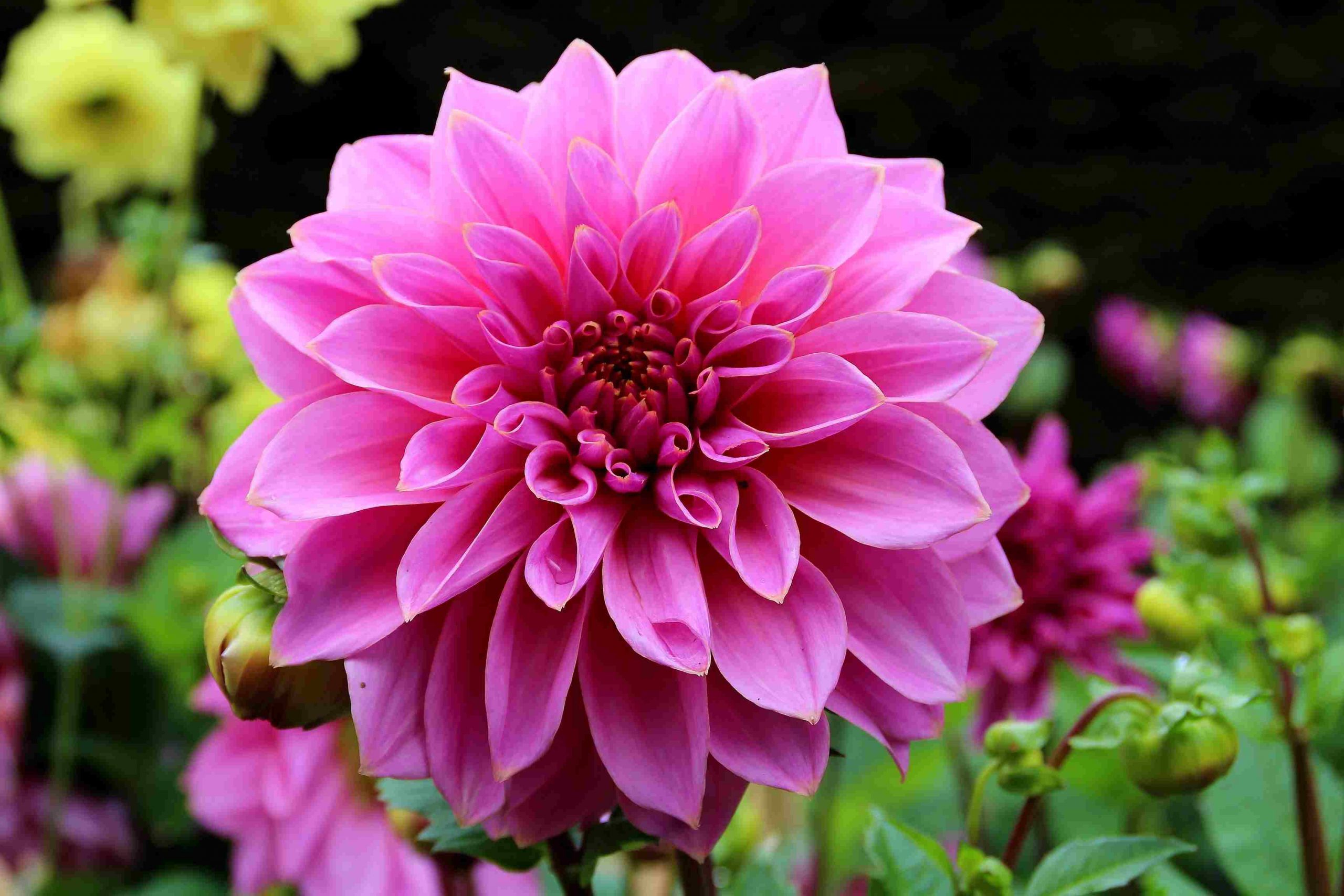With their spectacular diversity of colors, shapes, and sizes, dahlias are among the most versatile garden flowers. But with so much variety, it can be tricky to know exactly what you’re getting when you buy a dahlia plant or seeds.
In this article, we’ll break down the distinguishing features of the most common dahlia flower forms. Learn how to identify single, peony, cactus, pom pom, and other dahlia types so you can pick the perfect blooms for your garden.
Key Characteristics of Major Dahlia Types
Here’s a quick overview of some visual traits that set the main dahlia forms apart
Single dahlias – Daisy-like blooms with a single outer ring of petals surrounding a contrasting central disc Plants reach 1-2 feet tall.
Peony dahlias – Lush, multi-layered flowers resembling a peony. Two or more rows of petals surround the center. Grows 2-3 feet tall.
Cactus dahlias – Distinguished by their spiky, pointed petals that curve backwards. Bloom size ranges from 2-8 inches across.
Pom pom dahlias – Compact, dense, ball-shaped flowers 2-4 inches wide. Petals are tubular and incurved.
Anemone dahlias – Saucer-shaped blooms with one or more outer rings of ray florets and a dense cluster of tubular disc florets in the center.
Collarette dahlias – Single row of broad, flat ray florets surround a central cluster of shorter, upright petals that resemble a collar.
Now let’s explore some more details about the appearance, size, and growth habits of these delightful dahlia forms.
What Does a Single Dahlia Look Like?
Single dahlias feature daisy-like flowers with a single outer ring of petals called ray florets. These surround a central disc composed of tiny individual florets in a contrasting color.
- Flowers measure 2-4 inches across
- Plants grow 1-2 feet tall on average
- Petals are broad and flat or slightly curled along edges
- Disk florets create a dense central eye in shades of yellow, maroon, white, etc.
- Blooms are great for pollinators!
Popular single dahlia varieties include ‘Bednall Beauty’, ‘Bishop’s Children’, and ‘Maarn’.
What Does a Peony Dahlia Look Like?
Peony dahlias have lush, multi-layered flowers that closely resemble the bloom of a peony. There are two or more rows of broad petals surrounding the center rather than a single ring.
- Flowers are 3-6 inches wide
- Plants grow 2-3 feet tall
- Petals are rounded, loose, and irregularly arranged
- The central disc is visible and matches or contrasts with petal colors
- Often highly double blooms with lots of petals
Some pretty peony dahlia varieties are ‘Cafe au Lait’, ‘Kelvin Floodlight’, and ‘Miss Mary’.
What Does a Cactus Dahlia Look Like?
The cactus dahlia is identifiable by its spiky, pointed petals that curve backwards, giving the impression of cactus spines.
- Flowers vary from 2 inches to 8 inches across
- Plants range from 2-5 feet tall depending on cultivar
- Petals are long, narrow, and tubular with pointed tips
- Petals are sharply revolute, curling greater than 50% backwards
- Colors include purple, pink, red, white, yellow, orange
A few popular cactus dahlia varieties are ‘Hot Flash’, ‘Jowey Mirella’, and ‘Just Joey’.
What Does a Pom Pom Dahlia Look Like?
Pom pom dahlias produce adorably compact, dense, ball-shaped flowers. The tiny tubular petals curve inwards for more than 75% of their length, resulting in nearly spherical blooms.
- Flowers measure 1-4 inches wide
- Plants reach 1-3 feet tall
- Petals are thin, numerous, and incurved along entire length
- Colors include solids, bicolors, watercolor blends, and more
- Great for floral arrangements
Some fun pom options are ‘Chim Chiminee’, ‘Dandy Candy’, and ‘Lou’s Poppom’.
Key Takeaways
- Single dahlias have daisy-like flowers with ray petals around a central disc
- Peony dahlias feature multi-layered, lush blooms with ruffled, irregular petals
- Cactus dahlias have distinctive spiky, pointed, and backward-curling petals
- Pom pom dahlias produce charming little ball-shaped blooms
- Know your dahlia forms to pick plants with your favorite flower features!
With this guide to identifying common dahlia types, you’ll be a pro at recognizing the unique beauty of different dahlia blossoms. Time to go dahlia shopping!
Blog Network: Marthas Circle
This year the dahlias are growing really well, and some of them have already started to show off their bright, spiked flowers that bloom from midsummer to the first frost.
This year, I designated a new location for our all-dahlia garden – its behind my vegetable greenhouse in a bed previously used for growing grapes. The garden was planted in June. Yesterday, my gardeners, Ryan McCallister and Brian OKelly, staked the plants, so theyre well-supported as the heavy flowers develop. Dahlia is a genus of bushy, tuberous, herbaceous perennial plants native to Mexico and Central America. Our dahlias are from Floret, a family farm and floral design studio in the State of Washington. We also have some from Swan Island Dahlias in Oregon, a family owned business and the largest and leading dahlia grower in the United States. And, a selection from The Flower Hat, based in Bozeman, Montana.
Here are some photos, enjoy.
How to Plant Dahlia Tubers From Start to Finish
FAQ
Do dahlias come back every year?
Do dahlias need sun or shade?
Can you leave dahlias in the ground over winter?
Do dahlias spread on their own?
- The Ultimate Guide to Growing Strawberries in Raised Beds - August 8, 2025
- No-Dig Garden Beds: The Easiest Way to Grow a Beautiful Garden - August 6, 2025
- How to Protect and Preserve Wood for Raised Garden Beds - August 6, 2025

